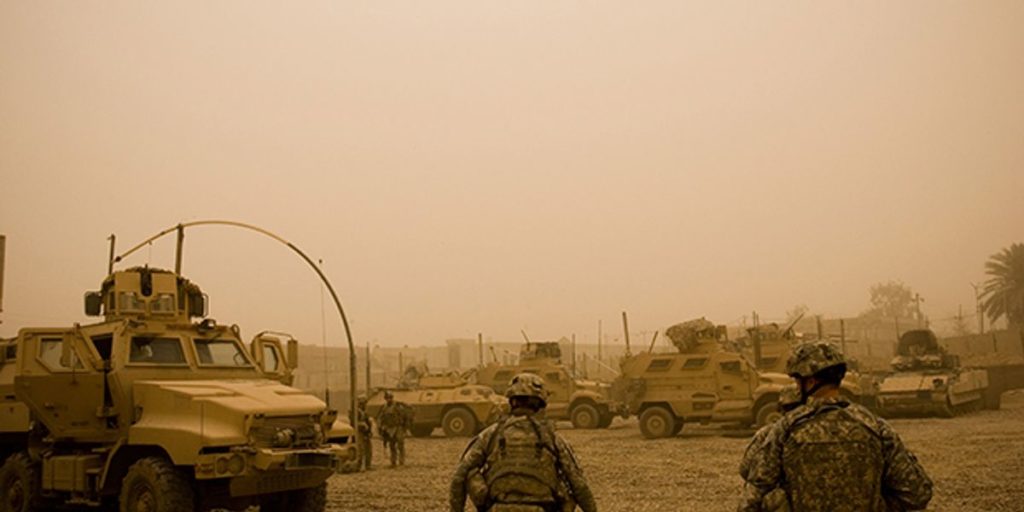Over the past 5 years, during which the U.S. Department of Defense spent more than $13 billion on counter-IED efforts, the IED did in fact become less effective. But how much of that success is attributable to technology? And was the money well spent? The answers are elusive.
At the very outset of the IED problem in Iraq, in mid- to late 2003, with soldiers driving around in unarmored Humvees and contractors in unaltered SUVs, almost every IED attack caused a casualty. It now takes roughly six IED attacks to cause one coalition casualty, according to JIEDDO.
Slightly more than half of all IEDs are found and cleared without detonating, JIEDDO says. Of those that do detonate, roughly 40 percent of them cause no injuries. More heavily armored vehicles are behind that statistic. And the more technologically advanced JLTV promises further improvements in survivability.
There are other indications of progress. Insurgent groups typically pay people, usually freelancers who are just in it for the money, to emplace IEDs. Several years ago, the going rate was about $50 per IED. Today the rate is $200 outside Baghdad, and $400 to $500 inside Baghdad, according to a counter-IED training official in Iraq. The higher rates are believed to reflect, among other things, the increased risk and danger of the job.
JIEDDO director Metz believes the factors behind that fee increase suggest that the IED problem is solvable and also indicate the way forward. “It’s constant pressure put on those who emplace IEDs that will win the day,” he says. “It’s becoming a cost-ineffective and risky business to be in.”
How much more can technology contribute to that solution? To explain a lull in IED activity in Iraq in early 2008, JIEDDO’s most recent annual report pointed to several factors: the cooperation of thousands of “concerned local citizens” who helped coalition forces locate IEDs and IED-making resources; the military surge, which stabilized some convulsive areas by pouring troops into them; and military efforts against the networks and “event chains” that lead to IEDs on the roads. Less prominent in JIEDDO’s list are technology-related factors, a fact expounded on by defense affairs writer Sharon Weinberger in a Wired blog that was subtitled in part “Tech barely a factor.”
Few of the people in Iraq whose job it is to deal with IEDs would embrace that assessment. They wouldn’t deny that it’s their eyes and intuition, along with local intelligence, that uncover most IEDs. But traveling Iraq’s roads regularly makes them more appreciative of things like jammers, Gyrocams, EOD robots, armor, infrared and other sensors, and useful intel distilled with the help of a computer program from maybe half a dozen sources.
Without a doubt, many big-budget projects and exotic technologies have fizzled or were quickly and cheaply countered by the insurgents. But that doesn’t mean that some of the technologies under development now or deployed in secret aren’t already working, or that others won’t be part of a more effective set of responses in the next few years.
It doesn’t even mean that pursuing each and every one of those ultimately unsuccessful projects was a mistake. “Defeating the system takes leadership,” says Lt. Col. Jeremy G. Mansfield, director of Canadian Forces EOD. “That’s why we pay the generals the big bucks. It takes risk. Some things are going to cost a lot of money, and they aren’t going to work. Get over it.”
The Lexington Institute’s Gouré believes that a combination of technologies, including some yet to be fielded, along with more survivable vehicles, aggressive exploitation of intelligence, and adherence to good operational countermeasures (simply varying the routes taken on repeated missions, for instance) might get the rate of IED detonations down to 15 or 20 percent from the present 40. That might be good enough.
“You want to get to a rate that’s tolerable for you but unacceptable to him,” he says. “I suspect that’s exactly how it will end.”
And don’t dismiss what’s been achieved so far, Gouré says. With new tactics and technologies in both counter-IED and EOD, “the American military has invented, in about three or four years, a way of warfare that didn’t exist before. That’s lightning speed.
“Could they be less bureaucratic?” he asks. “Probably not. That’s the way the system works.”
To Probe Further
For more on radically new technologies, such as terahertz-frequency and millimeter-wave radiation, see our Web-only sidebar “Terahertz Waves: No Silver Bullet.”


